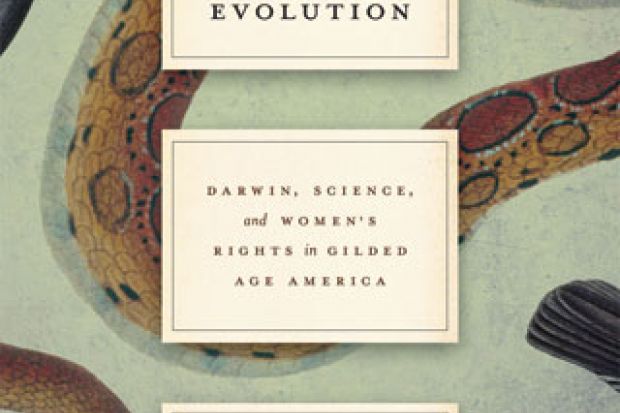As Kimberly Hamlin observes, feminists were ever in search of “an organizing belief system” on which to locate some lever to upend ancient gender inequalities. In the late 19th century, they found what they were looking for in the theory of evolution. How they did so, given that the men who dominated evolutionary science came to opposite conclusions, is the subject of this book. Feminist Darwinians emphasised a secondary aspect of evolutionary thought: the theory of sexual selection, by which sexual dimorphism advanced evolutionary progress via individuals’ choice of reproductive mates. Throughout the animal world, the choice was left to females – peacocks paraded their feathers to impress peahens. However, orthodox Darwinians contended that this pattern was reversed among humans. Their feminist contemporaries refused to accept the anomaly; evolution, they contended, empowered the human female.
Insisting that human reproduction and evolution were at one with the rest of the natural world by being based on female choice gave these pioneering biological thinkers a powerful tool. It suggested that women could control the future of what they called “the race” even as they claimed control over their own sexual and reproductive lives. As a historian of science, Hamlin is particularly interested in the world of evolutionary thought before professionalisation separated credentialed male scientists from bold female amateurs. But the stronger case here has to do with an intellectual and scientific tradition that offered many advantages to turn-of-the-century feminism.
This version of Darwinian thought allowed for a path from mid-19th century women’s rights egalitarians to the feminists of the early 20th century, with their new focus on the physical body. Historians of American feminism are frequently stymied by the transition from an emphasis on equality of men and women to sex differences. Hamlin has provided the most convincing explanation yet for this shift. When Elizabeth Cady Stanton began to speak in the 1860s not of the equal rights of the sexes but of their biological differences, she was not taking a step backward to “sexual spheres” but embracing an approach that engaged more deeply with what made human beings into men and women.
From Eve to Evolution does a fine job of arguing against those historians who dismiss out of hand the biologist turn of Gilded Age feminism for its racism and eugenicist overtones. Hamlin’s book is also full of original insights into well-known figures in women’s history – Charlotte Perkins Gilman, Margaret Sanger and Cady Stanton – even as it reintroduces long-forgotten contributors. Helen Gardener, an ardent and early advocate of evolution, was so persistent in her search for a biological basis for proving women’s intellectual equality to men that she bequeathed her brain to science.
This is an original and insightful book, but there are also problems in Hamlin’s methodology. From Eve to Evolution follows the history of American feminism solely as an intellectual tradition, omitting the crucial political context of the movement’s twists and turns. The Progressive Era feminist emphasis on political equality is dismissed as an unfortunate contraction of a much broader approach to women’s emancipation. This oversimplified judgement and others like it reflect an unfortunate tendency to rely on the interpretations of a single modern historian to establish context and analytic meaning, a practice that flattens historical context, scholarly debate and intellectual development.
That said, From Eve to Evolution is a contribution to both the history of American feminism and the history of women and science, as well as an excellent read. This is Hamlin’s first book. Where will she go from here? I look forward to finding out.
From Eve to Evolution: Darwin, Science, and Women’s Rights in Gilded Age America
By Kimberly A. Hamlin
University of Chicago Press, 256pp, £28.00
ISBN 9780226134611 and 4758 (e-book)
Published 9 June 2014
Register to continue
Why register?
- Registration is free and only takes a moment
- Once registered, you can read 3 articles a month
- Sign up for our newsletter
Subscribe
Or subscribe for unlimited access to:
- Unlimited access to news, views, insights & reviews
- Digital editions
- Digital access to THE’s university and college rankings analysis
Already registered or a current subscriber? Login











